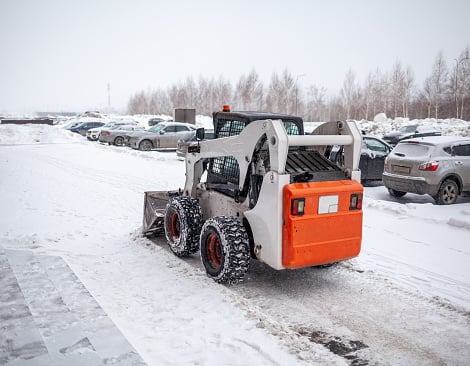Importance of Salt Removal with Street Sweeping in Winter
Winter is here with an influx of fall debris and snow on our streets. Communities and governments often sprinkle salt on icy roads to prevent car accidents, which may cause road damage and environmental deterioration in the long term. This means salt removal is even more important than ever during the freezing cold season. It ensures streets are clean and safe for cities.

Salt Spreading as a Safety Strategy
The brutally cold weather that occurs in winter affects more than 70% of Americans. Even though snow and ice during the warmer months of the year may appear picturesque in photographs, they pose the most challenging travel challenges and demand a significant amount of labor and resources to manage.
Salt is one of the most widely utilized substances for managing snow and ice (also known as sodium chloride). On paved areas, 22 million tons of sodium chloride, known as road salt, are spread to melt the ice and prevent car accidents. However, applying salt to walkways, highways, and other surfaces has drawbacks to roads and ecosystems.
Why Salt Removal is Necessary?
In the winter, when snow is falling, it is essential to keep the roads clear so that people can commute safely. One way to do this is to use salt, which melts the snow and keeps it from piling up on the ground. However, it can also be damaging to roads in other ways. Salt has a corrosive effect on metal and concrete surfaces as well as plants, trees, and other vegetation near the road. This can lead to increased maintenance costs for municipalities that have to repair or replace these surfaces more often than they would otherwise have had to.
In some circumstances, salt can hasten the development of potholes and exacerbate already present road damage. Although the salt itself does not cause potholes, it can shorten the lifespan of the road. Because of its ability to maintain liquid water even at extremely low temperatures, it achieves this by enhancing the freeze-thaw cycles at lower temperatures.
Sodium and chlorine are the two chemicals that make up the substance known as salt. As an extremely corrosive element, sodium will harm a variety of materials we use for interior and external surfaces, particularly wood floors. Besides, if salt is allowed to build up on parking lot striping, chlorine can have a major impact on the striping, causing the polymers to disintegrate.
Therefore, salt removal is crucial to roads and the environment in the long term.
Street Sweeping as an Ideal Salt Removal
It is essential that we remove the salt from parking lots, interior floors, roadways, and even our cars after the winter season to lessen its negative effects. The best method for removing salt that has been collected on surfaces during the winter is street sweeping, which can minimize the side effects of salt on roads and the environment.
Some people might think that using street sweepers might not be a good idea because they are using water and electricity resources to do their job. But this is not true as they are powered by a battery or solar power which makes them very environmentally friendly and easy on resources like water and electricity.
To remove as much salt from the roads, parking lots, and pavements as possible, municipalities use street sweeping, which uses the newest and most effective technology. Take some time to put a plan for expert street sweeping into action if you maintain a road, walkway, or sidewalk. The objective is to remove the winter salt residue, protect the paved surfaces, stripes, and floors, and ultimately save money.
Need reliable street sweepers? We offer quality street sweepers and receive overseas orders at affordable prices. Please feel free to contact us at 7223815555 if you require any municipal street cleaning. We promise our vehicles to have the best practices to meet cost efficiency.


